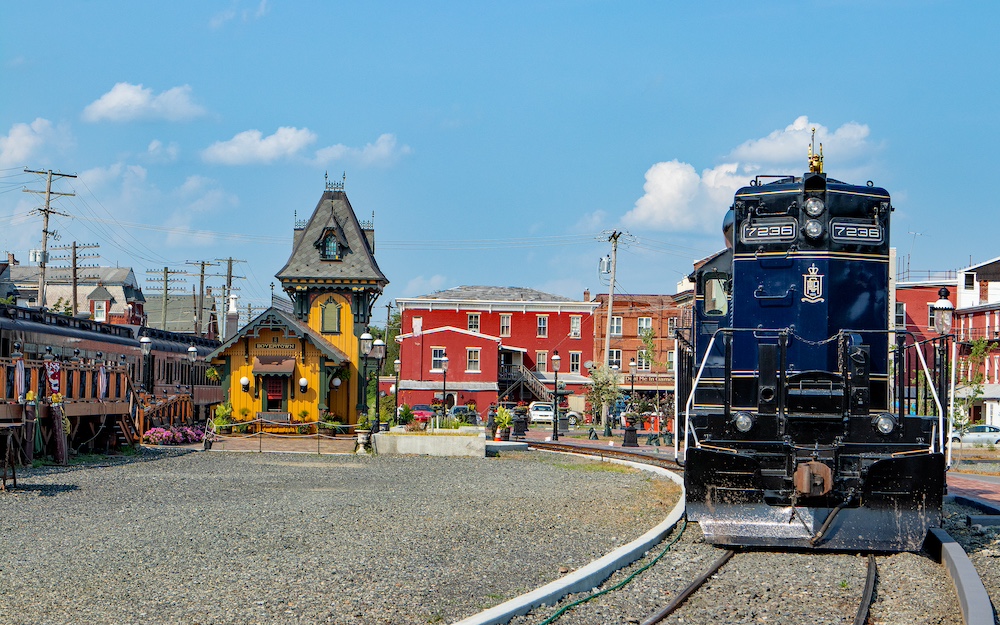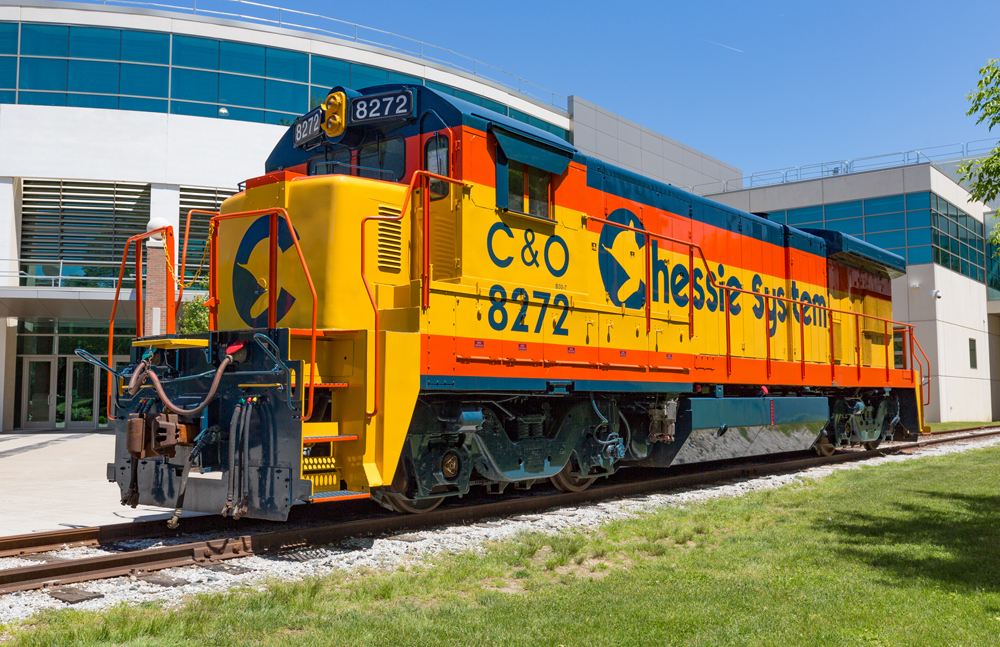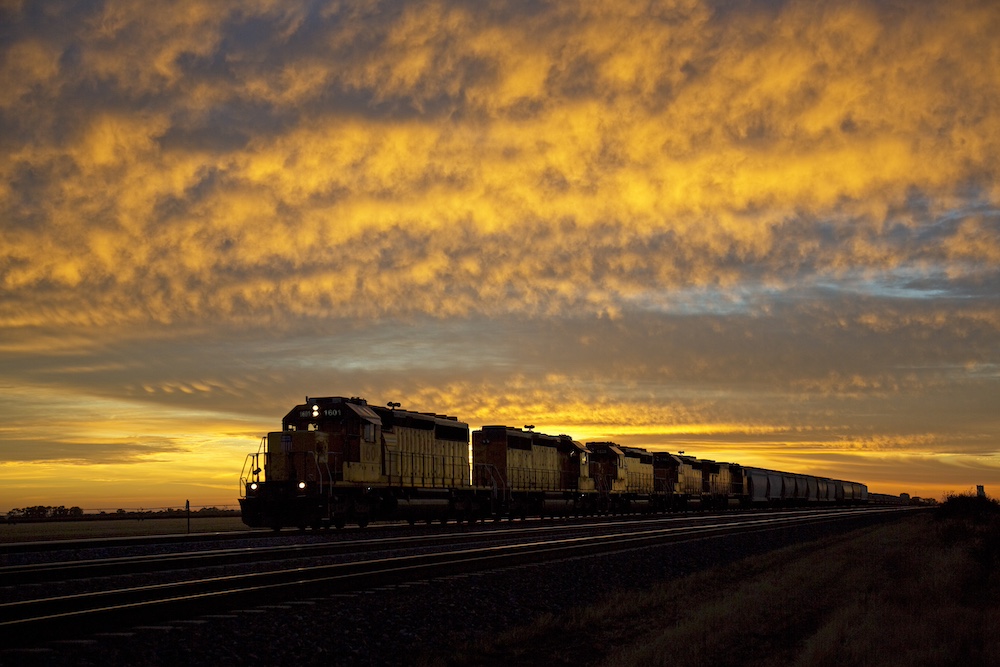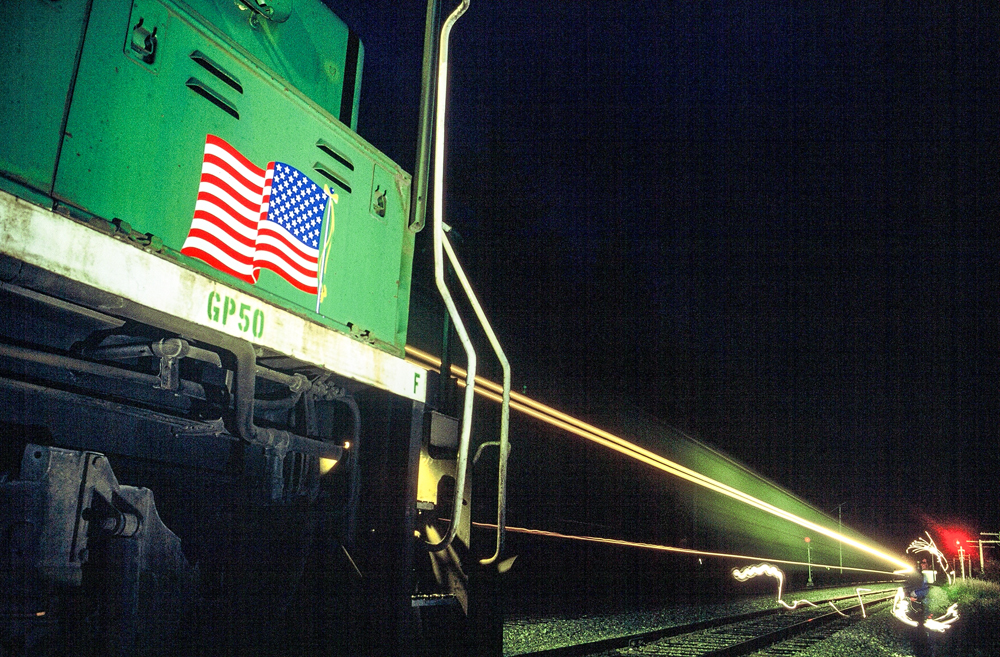Welch was an OS station, one of many scattered along the line in pre-radio days. Their function was to report the status of trains to the dispatcher over the company telephone or telegraph. When a train passed such an office, it was reported as “out of station,” or “OS.”
Welch outlasted other isolated OS stations because of its strategic location. Westbound trains were sometimes re-routed down the eastbound track when a derailment occurred on the westbound track, and vice-versa. Welch was where the re-routed train crossed over its proper track, oncoming eastbound trains being held there until the eastbound main line was cleared.
I know Welch, for during World War II, when my mother worked for the Santa Fe as an operator, we lived there. Welch had no stores, schools, medical facilities … nothing. Today OSHA might have a fit, but during the war there was a job to be done, and Santa Fe employees proudly did their bit.
Welch’s original office was a converted one-room salt storage building, and vestiges of salt could still be found in the cracks and crevices. Eventually the railroad put a partition inside the old building, adding a small room to the rear, where a relief operator could catch a little sleep. The only other living accommodations were three flimsy trailers for the operators.
Along with the yellow office and trailers were a coal house made of railroad ties, a small company telephone booth and an outhouse.
Welch had no electricity other than the 25-cycle current for the block signal lights, making kerosene the only choice for cooking, heating, and lighting. The Santa Fe did not provide kerosene for the living quarters, only enough for the office lamps. The operators had to haul their own kerosene in 5-gallon cans along with their groceries. Since no electricity meant no refrigerator, blocks of ice kept the food cold in the trailers’ small ice boxes. The railroad dropped off ice once a week during the summer; during the winter everyone knew it was cold so no ice delivery was deemed necessary. A local train delivered water each Monday to the four wooden barrels alongside the office. Used for drinking, washing, cooking, and any pets or flowers, this ration had to last for one week.
Entering the little office, you passed an old black coal stove supplying the only heat. At the far south end, on the right, were the two steel semaphore leavers. The rest of the south wall was taken up by a large wooden desk with cubbyholes containing the paperwork needed to run a railroad. A small wooden box with a jack allowed the operator to switch between the dispatcher’s line and the conversation phone, where you could call other stations, the wire chief, or other officials. Other than that, there was no outside communication. The telephone itself sat on the end of an extendable swivel and the operator wore a headset, punching a button on another wooden box to talk.
Life at Welch was not easy. Younger operators, particularly women, found the isolation difficult if not intolerable. Few remained long — they either bid out at the first opportunity or quit altogether. There was simply nothing to do, nowhere to go, or anyone to go anywhere with. You worked your eight hours, with a short lunch break, slept eight hours, then with your remaining eight hours thought of all the things you could be doing back in civilization. Otherwise, you read, found hobbies, or indulged in other forms of home-grown entertainment. If you had a car — most operators didn’t — and if Johnson Canyon wasn’t flooded, and if you wanted to abuse your car on the awful roads, you could spend a few hours in town.
The actual work consisted of periods of boredom punctuated with moments of chaos. The operator sat in a wooden captain’s chair listening to the dispatcher’s phone. The two block lights above the windows shone dimly until a train entered the block, a few miles up the line. The appropriate light went out and the operator immediately called the dispatcher.
“Welch, block west?”
“Okay, Welch, that’s extra 136. Nothing for him, let him go.”
The operator pulled back the left-hand lever, and far up on the semaphore the right-hand arm dropped down and the red light turned to green, granting the diesel-powered freight right of passage. When the train rounded the bend to the east, the operator went outside and watched it pass, looking for hotboxes or any other irregularities. When the caboose rumbled by, the operator went back in, put on the headset, and spoke again.
“OS Welch.”
“Go ahead, Welch.”
“Extra 136 by at 9:08.”
“Okay.”
Extra 136 was easy — just watch him go by. Often, however, the dispatcher had to get word to the train crew to clear (get out of the way of) a superior train. With no radios, this required “handing up” the information.
But that’s another story.








